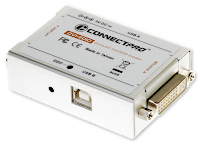KVM problems with Windows 7 and Windows 8

Ranking problem #1: Video resolutions changed or Icons on desktop re-located while changing between/among connected Windows 7 or Windows 8 systems of KVM switches. Caused: The KVM switches does not pass correct EDID of the display/monitor to systems connected to the KVM switches. Solution # 1 . Adding an EDID emulator in between each connected systems and kvm switches Solutions #2 . Upgrade or replace your KVM switch with Video DDM KVM or "DDM class" KVM switches . The Video DDM= Full-time All DDC-EDIC function which provide dynamic EDID feeding to each connected systems of KVM switch. Ranking problem #2 : My Logitech wireless Unifying Receiver devices (keyboard/mouse) can not work with my KVM switches. Caused: the "Device Stage" of the Windows 7/8 requested to check the status of all connected I/O devices (including monitor, keyboard, mouse or touch-screen if equipped... etc..), If you're using "Hub-based